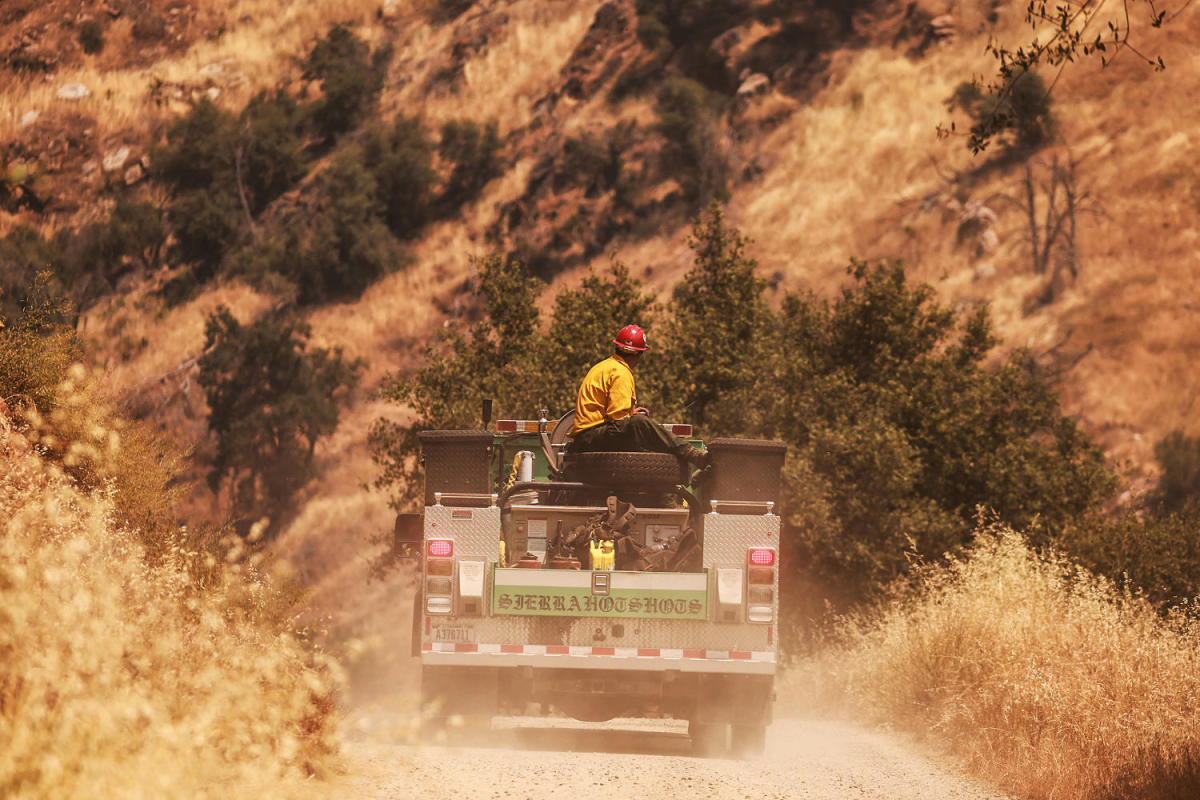Much of California is facing an extreme weather forecast this week: a dangerous heat wave and high fire risk, while millions of people are outside celebrating Independence Day.
Temperatures in the Sacramento Valley could reach 115 degrees, said Kate Forrest, a meteorologist with the National Weather Service in California’s capital. A heat warning for the area begins Tuesday and is expected to last through at least Saturday.
“We expect increased heat and extreme heat risk across most of inland California,” Forrest said. “This heat is going to be a prolonged event.”
Forecasters expect the heat wave to begin inland California on Tuesday and spread to the Pacific Northwest and deeper into Southern California later in the week. According to the National Weather Service, extreme heat watches, warnings and advisories will sweep across the West on Tuesday, from southern Oregon to the low desert of southeastern California.
The increased temperatures are the result of a strong high pressure area that remains over the region.
“High pressure systems force air down, which compresses that air and raises the temperature,” Forrest said. “That air becomes stagnant.”
State officials are bracing for the heat. Gov. Gavin Newsom ordered emergency officials to activate the state’s operations center — the central command station during emergencies — his office said in a news release.
The warm weather could remain above 80 degrees Fahrenheit in some places overnight. On Friday, much of inland California will experience “extreme” conditions, according to the HeatRisk map, a tool from the Centers for Disease Control and Prevention and the National Weather Service. The designation means agencies expect impacts to health care facilities and infrastructure.
An extreme heat warning is also in effect through Saturday for the area around Medford, Oregon, and other southern parts of the state.
“If you have neighbors who don’t have air conditioning, check on them more often,” said Brad Schaaf, chief meteorologist with the National Weather Service in Medford.
Some forecasting models suggest the Medford region could set a record for consecutive 100-degree days, Schaaf said. The region had 10 such days in a row in 1967.
The sharp rise in temperatures in both states on Tuesday is accompanied by dangerous fire conditions.
Pacific Gas & Electric said Monday that power outages are likely in 10 California counties on Tuesday, given the high winds and dry conditions expected across central California. The shutdowns are intended to proactively reduce the risk of wildfires in areas where wind could knock down power lines or topple trees. Some shutdowns are also expected on Wednesday.
But these preventive blackouts will likely leave some communities without power as mercury levels rise to dangerous levels.
Forrest predicted a 45 percent chance of winds of more than 35 mph (56 kph) in the Sacramento Valley, with humidity dropping to the low teens. A recipe for fast-moving wildfires.
The plants are dry and ready to burn, especially at elevations below 3,000 feet, she added.
“If inflammation occurs, it will spread,” Forrest said.
That’s tricky timing, since the festivities kick off around July 4 with fireworks shows.
“It’s not ideal,” Schaaf said. “We urge everyone to be extremely careful when participating in activities that create sparks, such as setting off fireworks.”
The California Department of Forestry and Fire Protection is tracking 13 active fires, of which only four have burned more than 100 acres.
In the Southwest, the wildfire season has already turned deadly, with two people dead and 500 homes destroyed by a wildfire that ravaged the community of Ruidoso, New Mexico, last month.
Climate change is increasing the likelihood of fires and heat waves. Last year, the nonprofit Climate Central calculated how the number of fire-weather days in the U.S. had shifted from 1973 to 2022. The analysis found that the Sacramento Valley, on average, is experiencing nearly two weeks more fire weather than it did 50 years ago.
Heat waves, meanwhile, are becoming more frequent and lasting longer, according to data from the U.S. Environmental Protection Agency. U.S. cities used to have an average of two heat waves a year; now they typically get six. Those heat waves are also lasting about a day longer, the data show.
This article was originally published on NBCNews.com
